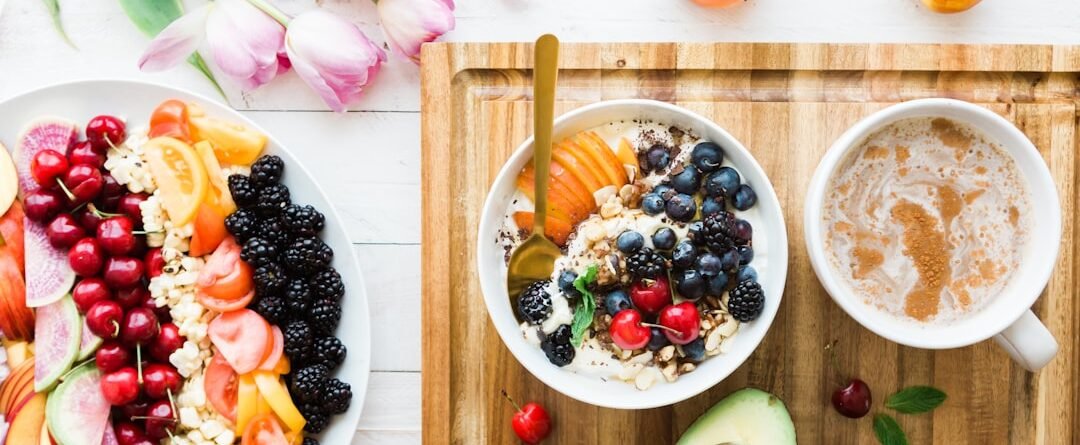Transform Your Child’s Well-Being Through Their Gut: Why Your Kitchen is the Ultimate Powerhouse
Ever heard the saying, “You are what you eat”? Well, for your child, it might be more accurate to say, “You think and feel what you eat!” Science has uncovered an amazing truth: the gut and brain are besties. That’s right!
The bustling ecosystem in your child’s tummy – their microbiome – is working overtime to shape not only how they digest food but also how they think, learn, and even behave.
If this sounds like the beginning of a superhero origin story, it kind of is. And guess what? The superhero headquarters is your kitchen. Yes, your kitchen! With the right foods, you can help your child thrive physically, emotionally, and mentally. Let’s explore the fascinating connection between the gut and the brain and how you, armed with a spatula and a little humor, can turn mealtimes into transformative moments.
The Gut-Brain Connection: A Friendship That Shapes Your Child
Think of your child’s gut as a jam-packed, tiny city full of microbes. There are trillions of these microorganisms, working like busy citizens to keep the city running smoothly. But when the “city” is under attack – maybe from too much junk food or too many antibiotics – chaos can break loose.
That’s because the gut and the brain are in constant communication through something called the gut-brain axis. It’s like a superhighway for information, where your gut sends signals to the brain about how things are going down below. When the gut is healthy, this relationship boosts brainpower, mood stability, and focus – exactly what every parent dreams of for their kid, especially during homework time!
But when the gut is out of whack, the brain can suffer. Studies show that an imbalanced gut can lead to inflammation, trouble concentrating, mood swings, and even long-term issues like anxiety. So, that tantrum over math homework? It might not just be math – it could be what they ate for lunch.
Mission “Gut Health”: Why Your Kitchen Is Ground Zero
Your kitchen is more than a place to whip up quick PB&Js. It’s the control center where you can shape your child’s gut health – and by extension, their overall well-being. Every choice you make in the kitchen is like casting a vote for your child’s future health.
Here’s the kicker: It doesn’t take a Michelin-star chef to make a big difference. Here are some practical (and even fun!) tips for gut-friendly eating:
1. The Green Superheroes: Vegetables
Let’s face it – getting kids to eat veggies can feel like convincing a cat to take a bath. But veggies are a goldmine for gut health. Spin it as a superhero story: “This broccoli is like a shield for your tummy soldiers!” Leafy greens, broccoli, and carrots are packed with fiber that feeds the good bacteria in their gut. Chop them up, sneak them into pasta sauce, or even blend them into smoothies – they’ll never know!
2. The Power of Fermented Foods
Yogurt, kefir, pickles, and even sauerkraut are your new allies. These foods are loaded with probiotics – the friendly bacteria that help balance your child’s microbiome. If your kid wrinkles their nose at sauerkraut, try starting with yogurt or a fruity kefir smoothie. Bonus points if you call it a “magic gut potion.”
3. Cut the Sugar, Boost the Brain
We all know kids love sugar, but too much of it can wreak havoc on their gut. Sugar feeds harmful bacteria, which can lead to tummy troubles and even affect their mood. Swap out sugary snacks for gut-friendly options like berries, nuts, or air-popped popcorn. Need something fun? Freeze grapes or make yogurt popsicles together – dessert that actually helps their gut!
4. The Spice Cabinet: Your Secret Weapon
Spices like turmeric, cinnamon, and ginger aren’t just for adults. They have gut-healing properties and can be easily incorporated into kid-friendly recipes. Turmeric milk (golden milk) can be a comforting bedtime drink, while cinnamon can jazz up oatmeal or toast.
Family Meals: Fueling the Gut and the Heart
Here’s something amazing: sharing meals as a family doesn’t just strengthen relationships; it also boosts gut health. Research shows that eating together can encourage healthier food choices and promote better digestion. Plus, kids who help prepare meals are more likely to try new foods – even the green ones!
Tips for Family Mealtime Magic:
- Get Hands-On: Let your child wash veggies, sprinkle spices, or stir sauces. It gives them ownership and makes them excited to eat what they helped create.
- Make It Fun: Try a “rainbow plate challenge,” where they have to include as many colors as possible on their plate.
- Slow Down: Encourage chewing slowly and savoring flavors. This not only helps digestion but also teaches mindfulness.
And remember, no one’s perfect. If your kids devour chicken nuggets and fries once in a while, don’t panic. It’s about balance, not perfection. Even small steps can lead to big changes.
Cooking as a Life Skill: Start Young, Aim High
One of the greatest gifts you can give your child is the ability to cook – not just for themselves but for their future health. Start with simple tasks like cracking eggs, rolling dough, or assembling sandwiches. As they grow, teach them about nutrition and how certain foods make them feel energized, focused, or calm.
Here’s an idea: turn cooking into a mini science experiment. Let your child guess how a food will help their body or brain. “What do you think blueberries do?” (Spoiler: They’re packed with antioxidants that boost memory!)
Not only will this make them more curious about food, but it might also make them less resistant to trying new things.
Food as Medicine: A Prescription You Can Eat
You don’t need a doctor’s note to start using food as medicine for your child. Here’s the ultimate takeaway: every bite is an opportunity to fuel their growing bodies and curious minds. By focusing on whole, minimally processed foods, you’re not just feeding their stomach – you’re feeding their future.
Start small. Pick one or two gut-friendly changes and try them out this week. Maybe it’s introducing a Meatless Monday packed with beans and greens. Or swapping out chips for apple slices with peanut butter. The key is consistency – the more often you make gut-friendly choices, the stronger your child’s microbiome becomes.
And remember, your kitchen is more than a place to cook. It’s where you bond, laugh, and build memories – all while giving your child the tools to thrive.
Final Thoughts: Your Gut, Their Gut, Everyone Wins
The journey to better gut health isn’t a sprint – it’s a marathon. But it’s a fun one, filled with delicious experiments and opportunities to learn together. By turning your kitchen into a hub of health and creativity, you’re not just nurturing your child’s gut; you’re helping them build a strong foundation for life.
So, next time your child asks, “Why do I have to eat this broccoli?” you can answer with a grin, “Because it’s building a superhero team in your tummy!” Now, go forth and conquer the kitchen – one gut-friendly meal at a time.
Happy cooking, and may your kitchen be the heart of health and happiness in your home! 🥦🍓













LEAVE A COMMENT